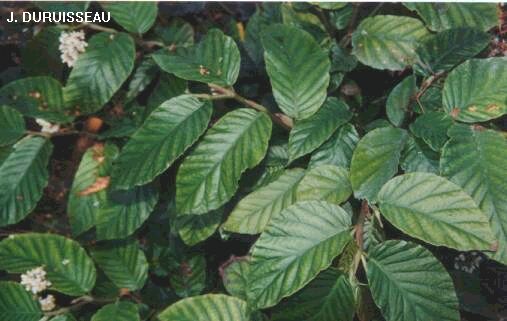
Begonia arborescens var. confertiflora
As the name suggests this begonia is tree-like and one of the tallest of all free-standing begonias. Begonia arborescens is native to the Atlantic Coastal Forest of Brazil, where it is common in humid shady locations in the rain forest. After seeing this species in the wild, Marc Hachadourian, a horticulturist at New York Botanical garden, has suggested that it may mimic certain species of Cecropia, which are common trees of the rain forests where B. arborescens lives. This hypothesis is intriguing since cecropias have an intricate relationship with ants that live inside their stems and protect them from herbivores. If this Begonia is indeed capable of fooling potential herbivores into thinking it is a Cecropia and therefore protected by ants, it is easy to see why this bluff may have evolved. Three readily distinguished varieties of B. arborescens have been described. The species, B. arborescens var. arborescens, as commonly found in nature, has large very broad leaves and is almost hairless. The plant B. arborescens var. confertiflora inhabits a higher altitude and has dense, long, soft hairs along the main vein of its leaf blade and on its flower stalks. Begonia arborescens var. oxyphylla has relatively narrow leaf blades that measure no more than 6 cm across. This variant, while having the smallest natural distribution, is the one most often seen in cultivation.
Begonia arborescens needs a lot of space and for this reason is often grown in a bed within a greenhouse, rather than in a pot. The Atlanta Botanical garden grows it in this way in their tropical house, and its large size helps produce the illusion that it is growing in a natural tropical rain forest. At that garden the species thrives in a very shady position with a high relative humidity. The species has seldom, if ever, been used in hybridization.
Begonia arborescens Raddi
Section Pritzelia, shrub-like group
Memoriè di Matematica e di Fisica Società Italiana della Scienze (Modena) 18: 408 (1820)
Extract from Begonias By Mark C. Tebbitt, Brooklyn Botanic Garden p. 83-4 Timber Press
Synonymy: Begonia dimidiata Vell. Fl. Flum. X. t. 46; Steineria pulchella Klotsch Begon. 65; Begonia patens Giseb. in hb. Hook; Begonia confertiflora Gardn. in Hook. Journal IV. 134Though this is the name attributed by Walter oates to the Begonia growing at Monserrate, I suspect that the plant was actually Begonia angularis, at tree-sized Begonia which is still found in some old Sintra gardens.

No comments:
Post a Comment